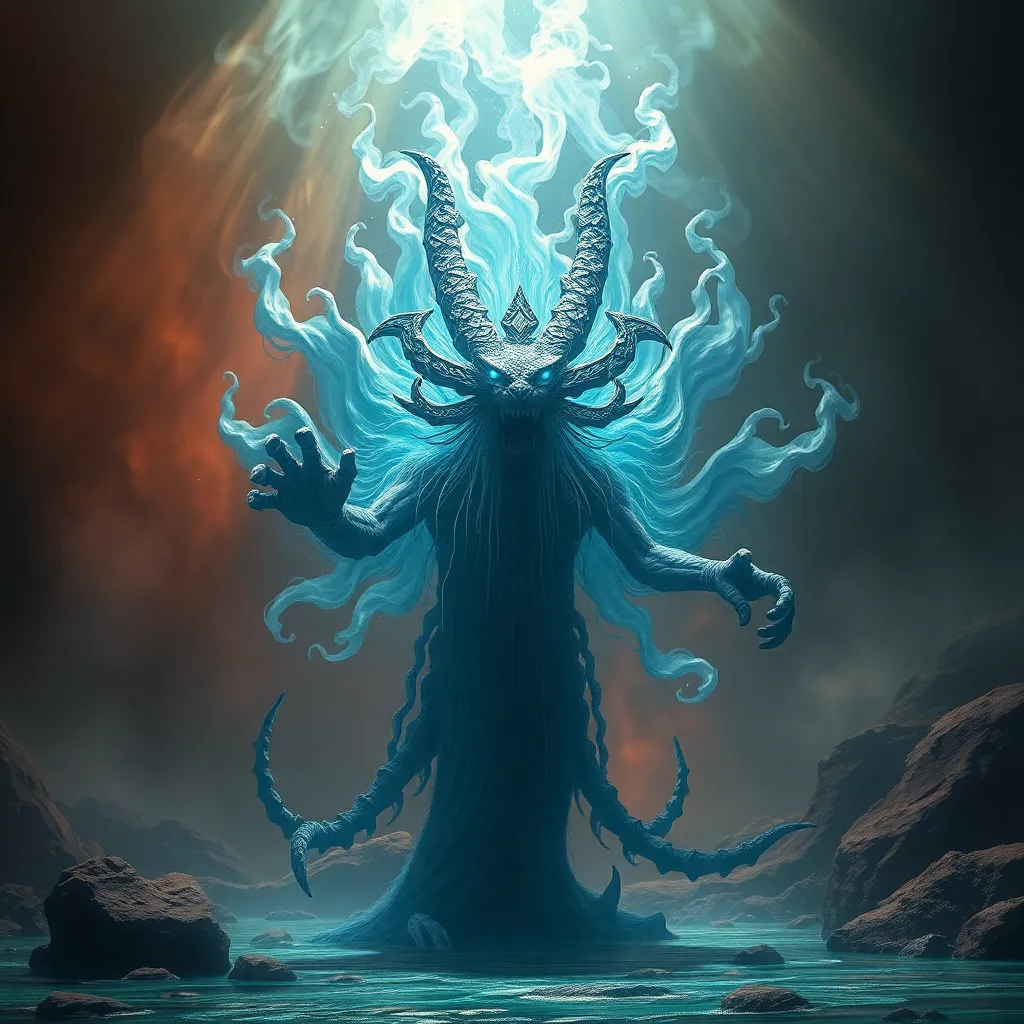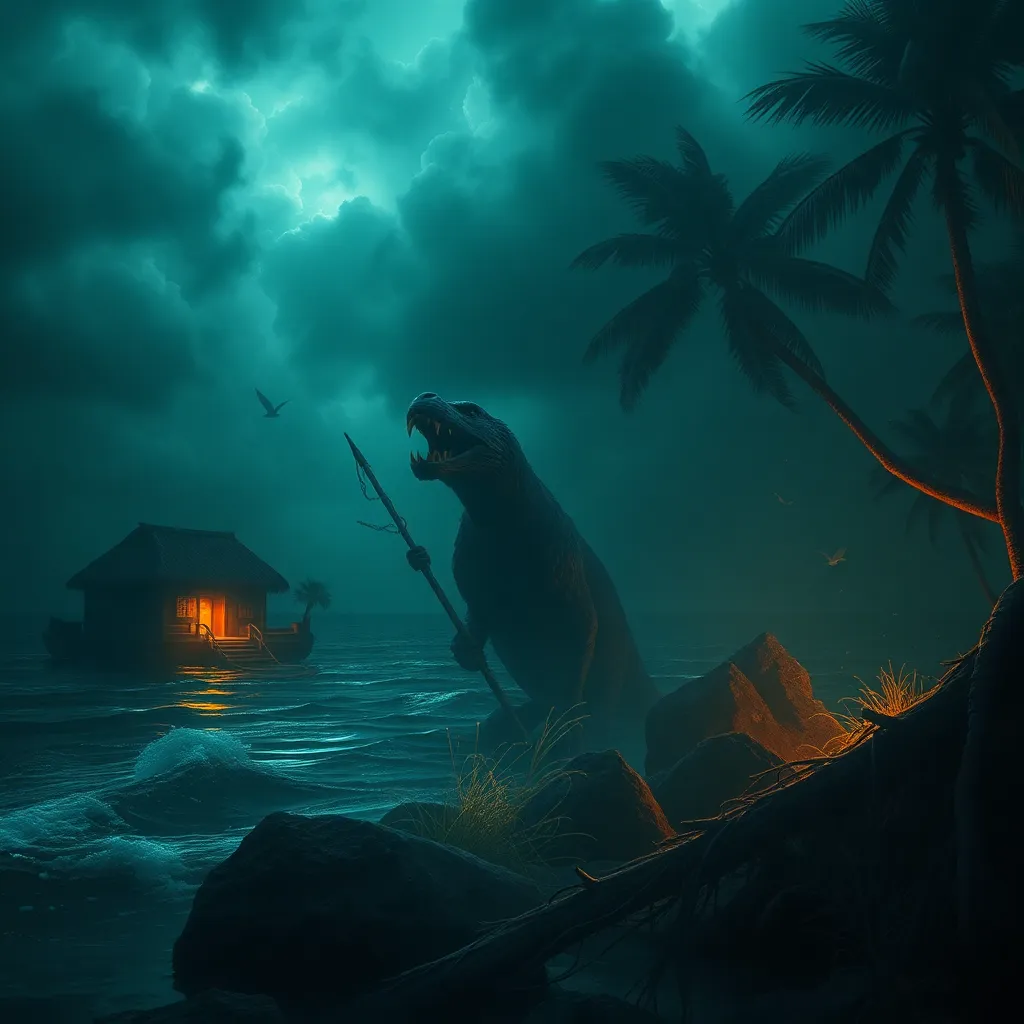Unveiling the Ahuizotl: Origins and Interpretations of the Water Demon
I. Introduction
The Ahuizotl is a fascinating creature from Mesoamerican mythology, particularly within the traditions of the Aztec and other indigenous peoples of Mexico. Often described as a water demon, it has captured the imaginations of many and remains a significant figure in the folklore of the region.
Understanding the Ahuizotl’s cultural significance is essential for appreciating the mythology and beliefs of the indigenous peoples of Mesoamerica. This article aims to explore the origins, characteristics, and interpretations of the Ahuizotl, as well as its continuing relevance in modern culture and spiritual practices.
II. Historical Context
To fully grasp the importance of the Ahuizotl, one must consider the historical context of pre-Columbian beliefs and mythology in Mesoamerica. The region was rich in diverse cultures, each with its own pantheon of gods and spirits.
Water was a central element in the belief systems of the Aztecs and other indigenous cultures. It was often associated with life, fertility, and the sustenance of both people and nature. The Ahuizotl occupies a significant place among the various water deities, embodying the duality of water as both a source of life and a potential threat.
III. Physical Description and Characteristics
The Ahuizotl is traditionally depicted as a creature resembling a dog or a small wolf, with some striking features that set it apart from other animals. Common characteristics include:
- A long, flexible body
- A hand resembling that of a human, often described as being used to drag victims underwater
- A face that combines elements of various animals, including a snout and large eyes
- A tail that ends in a fish-like fin, reinforcing its association with water
These features carry deep symbolism, representing the creature’s connection to both the natural and supernatural worlds. The variations in descriptions across different cultures reflect the diverse interpretations of the Ahuizotl and its significance within various mythologies.
IV. Folklore and Legends
Numerous myths and stories involve the Ahuizotl, often highlighting its role as a guardian of water and wildlife. In many tales, the creature is portrayed as both a protector and a predator, emphasizing the complex relationship between humans and nature.
Notable myths include:
- Legends of fishermen who encountered the Ahuizotl while attempting to catch fish in sacred waters, often resulting in dire consequences.
- Stories of the Ahuizotl leading travelers to their doom, luring them with its enchanting appearance before dragging them underwater.
- Accounts of the Ahuizotl defending its territory from those who would harm the aquatic ecosystem.
These narratives served to instill respect for water and nature, highlighting the Ahuizotl’s role as a guardian of the environment.
V. The Ahuizotl in Modern Culture
In contemporary culture, the Ahuizotl has found its way into various forms of literature and art. Writers and artists have drawn inspiration from its unique characteristics and the rich folklore surrounding it. Some notable representations include:
- Literature: The Ahuizotl appears in novels exploring indigenous themes or magical realism.
- Art: Artists depict the Ahuizotl in various styles, often emphasizing its mystical and menacing aspects.
- Media: Films, video games, and other forms of entertainment have incorporated the Ahuizotl as a character or a reference point, showcasing its influence on popular culture.
Moreover, the Ahuizotl has emerged as a symbol in environmental discussions, representing the need to protect water sources and wildlife in the face of modern challenges.
VI. Comparative Analysis with Other Mythical Creatures
When comparing the Ahuizotl to other mythical creatures in global folklore, several similarities and differences become apparent. Other water deities, such as the Japanese kappa or the Celtic selkie, share traits with the Ahuizotl, including:
- A connection to water and aquatic environments.
- The ability to exhibit both benevolent and malevolent behaviors.
- Symbolism related to nature and the protection of ecosystems.
However, the Ahuizotl’s unique traits—such as its specific physical characteristics and its role as a guardian of water—distinguish it within the broader pantheon of water deities. Its narrative function often emphasizes the consequences of human actions on the environment, making it a compelling figure in discussions about sustainability.
VII. The Ahuizotl in Contemporary Spirituality
In recent years, there has been a revival of interest in indigenous beliefs and practices, leading to a renewed focus on figures like the Ahuizotl. Many individuals are exploring the creature’s significance as a totem or spirit guide, interpreting its symbolism in ways that resonate with modern spiritual practices.
Some modern interpretations include:
- The Ahuizotl as a protector of personal and environmental boundaries.
- Utilizing the Ahuizotl’s imagery in rituals aimed at promoting ecological awareness.
- Adapting traditional stories to contemporary contexts to explore themes of balance and respect for nature.
These adaptations demonstrate the Ahuizotl’s enduring relevance and its potential to inspire a deeper connection with the natural world.
VIII. Conclusion
In summary, the Ahuizotl serves as a rich symbol within the mythology of Mesoamerica, embodying the complexities of human interaction with water and nature. Its historical context, physical characteristics, and role in folklore highlight the significance of this water demon in indigenous cultures.
The ongoing relevance of the Ahuizotl reminds us of the importance of understanding cultural heritage and the lessons that can be learned from traditional beliefs. As interest in indigenous mythology and folklore continues to grow, there is an invitation for further exploration of these rich narratives and their implications for contemporary society.



